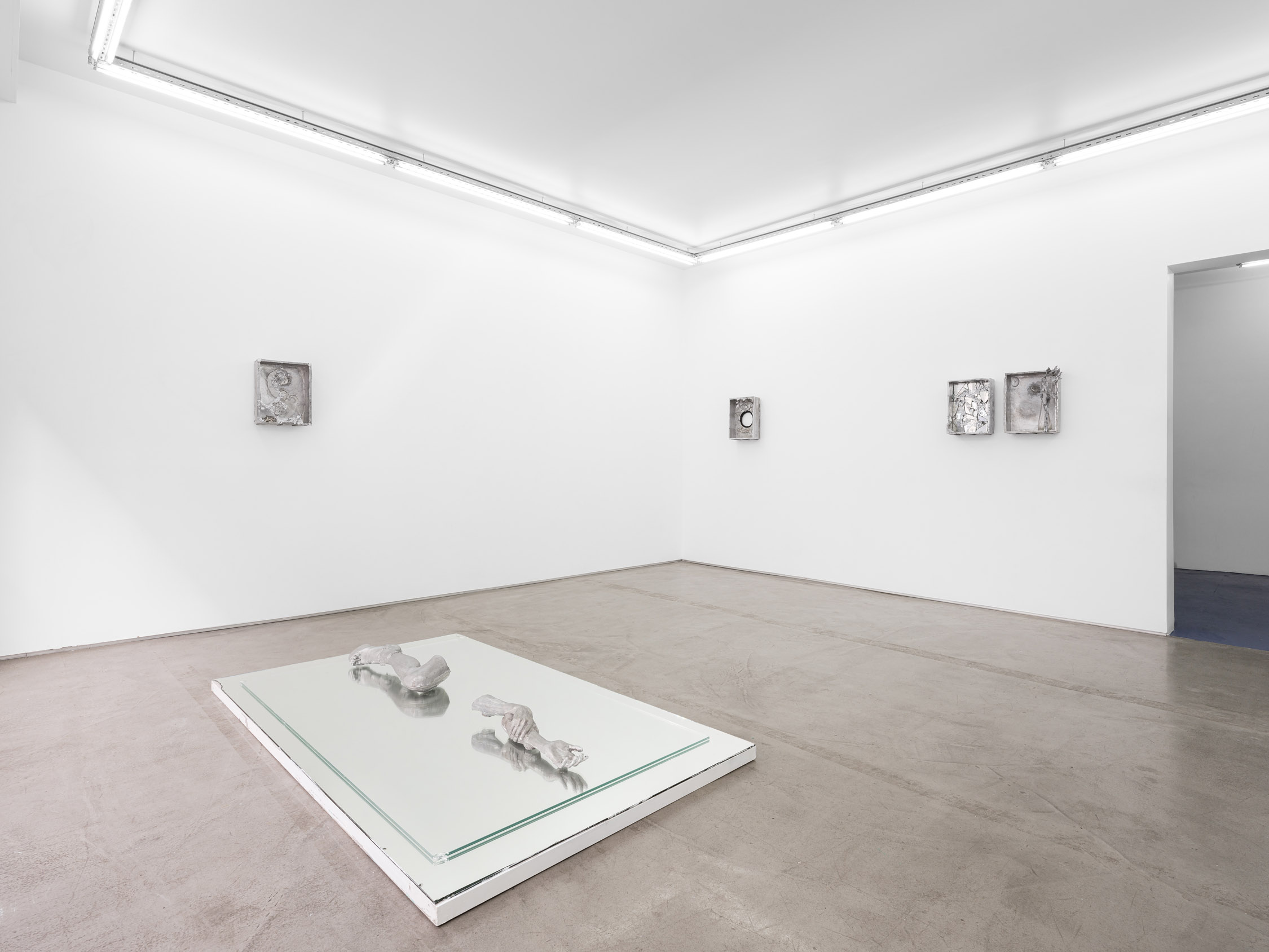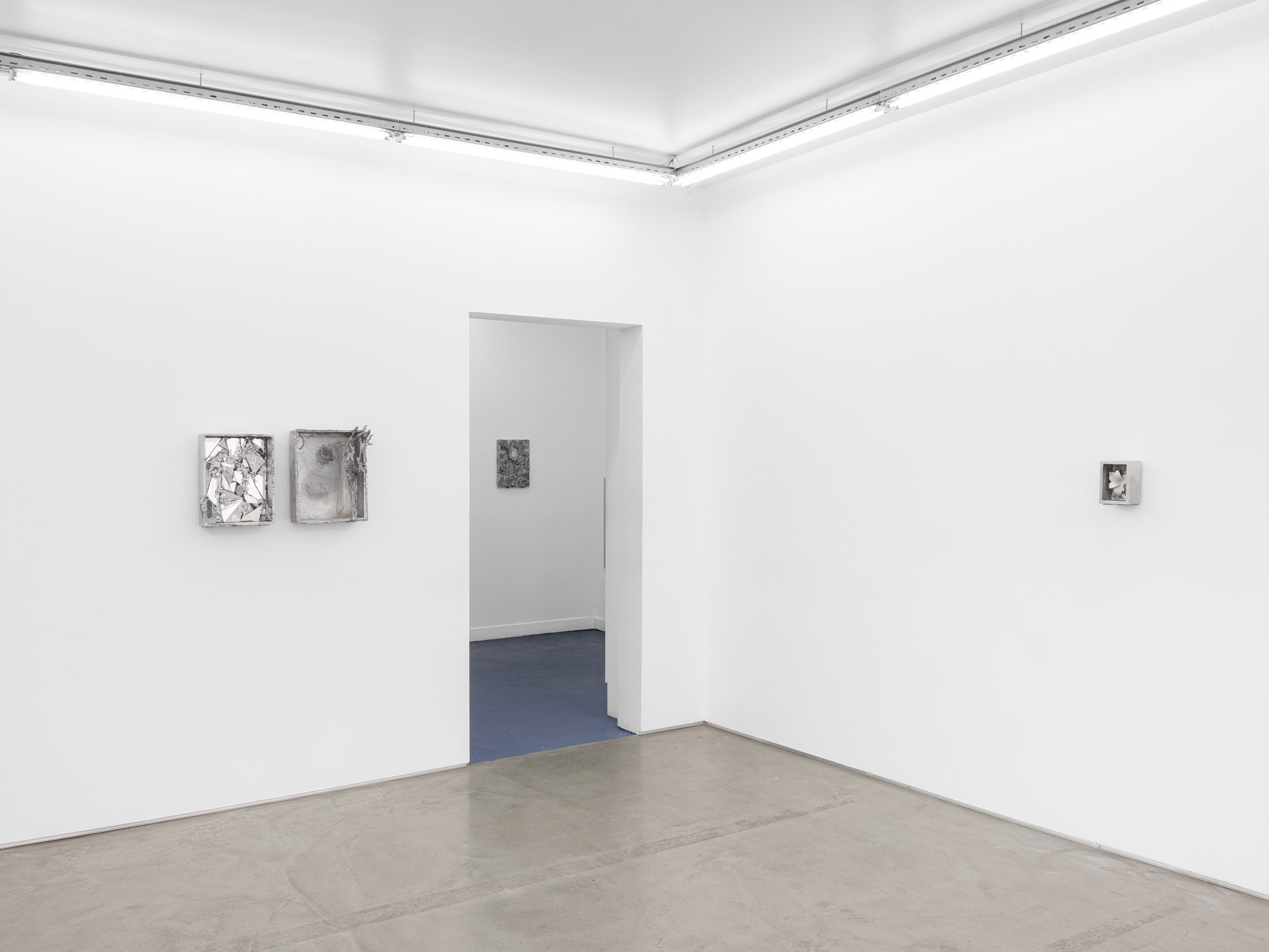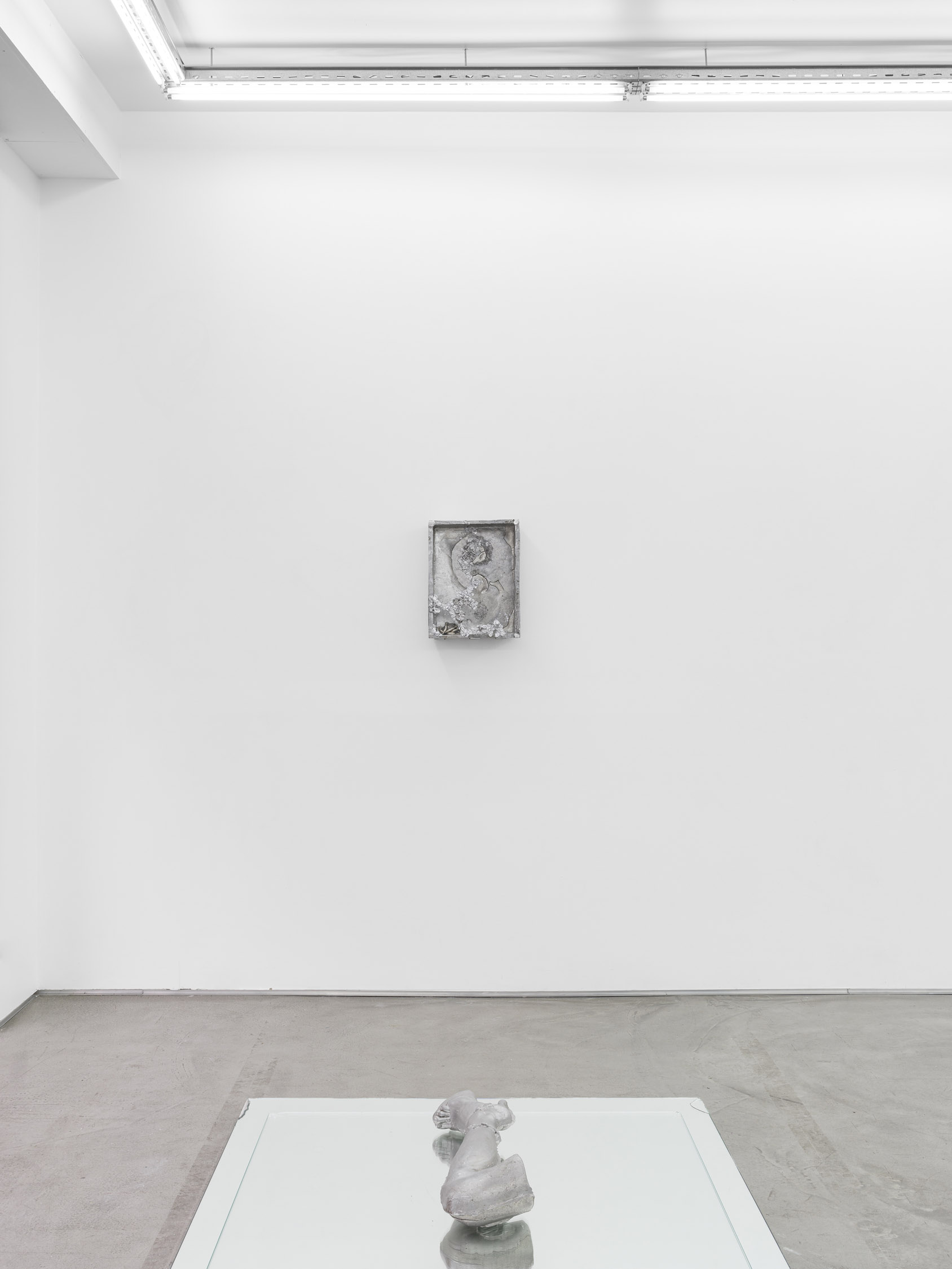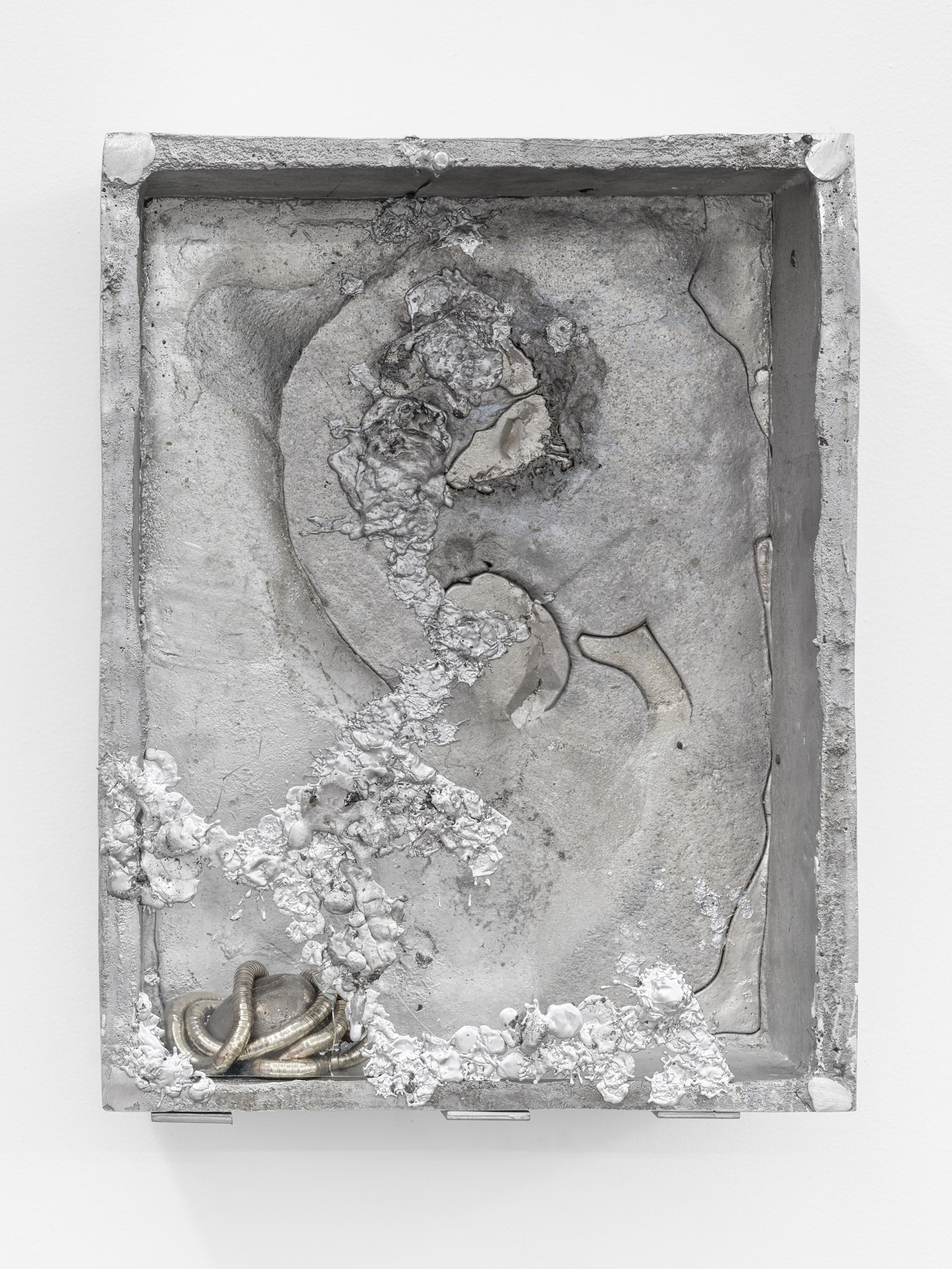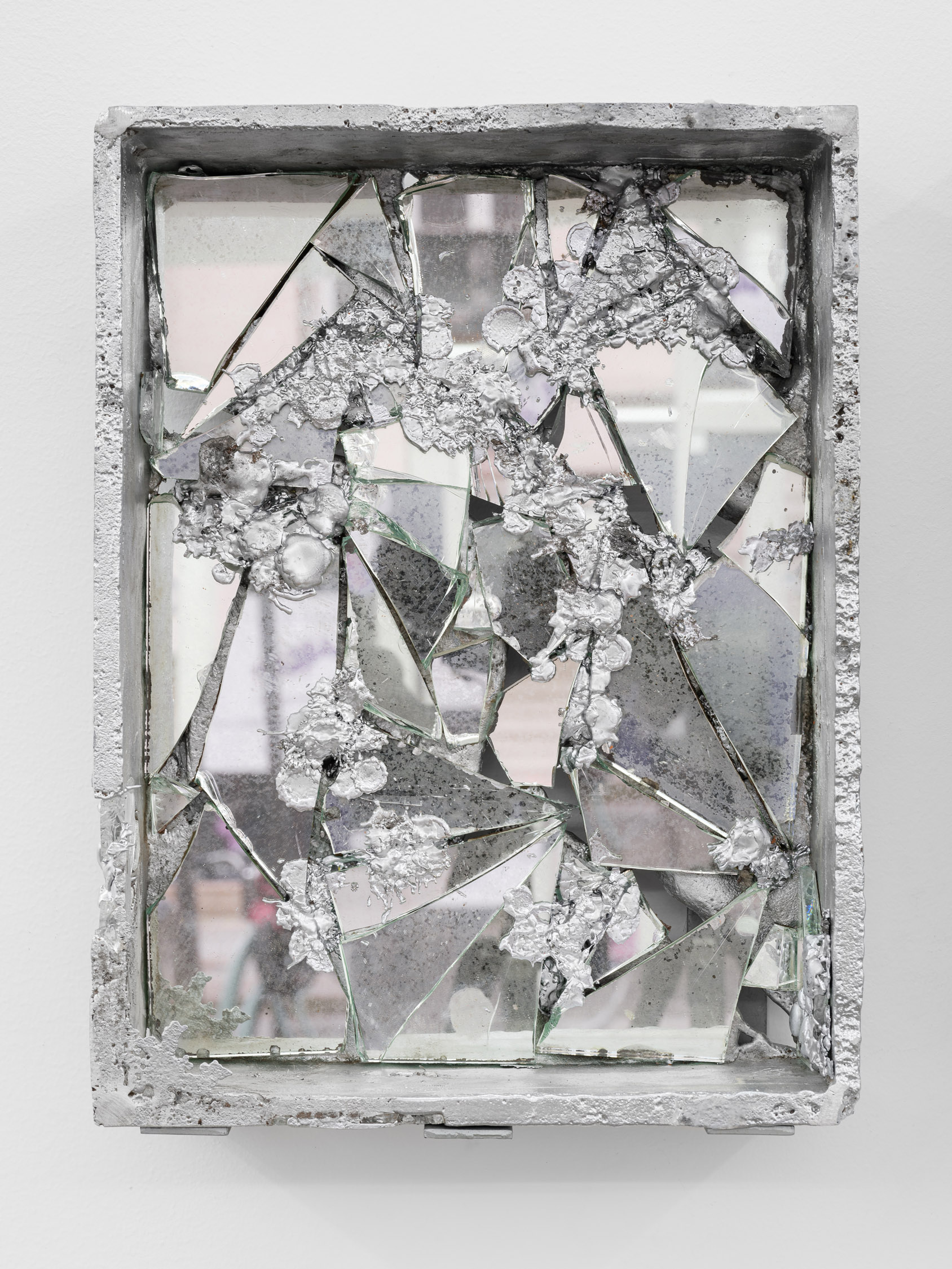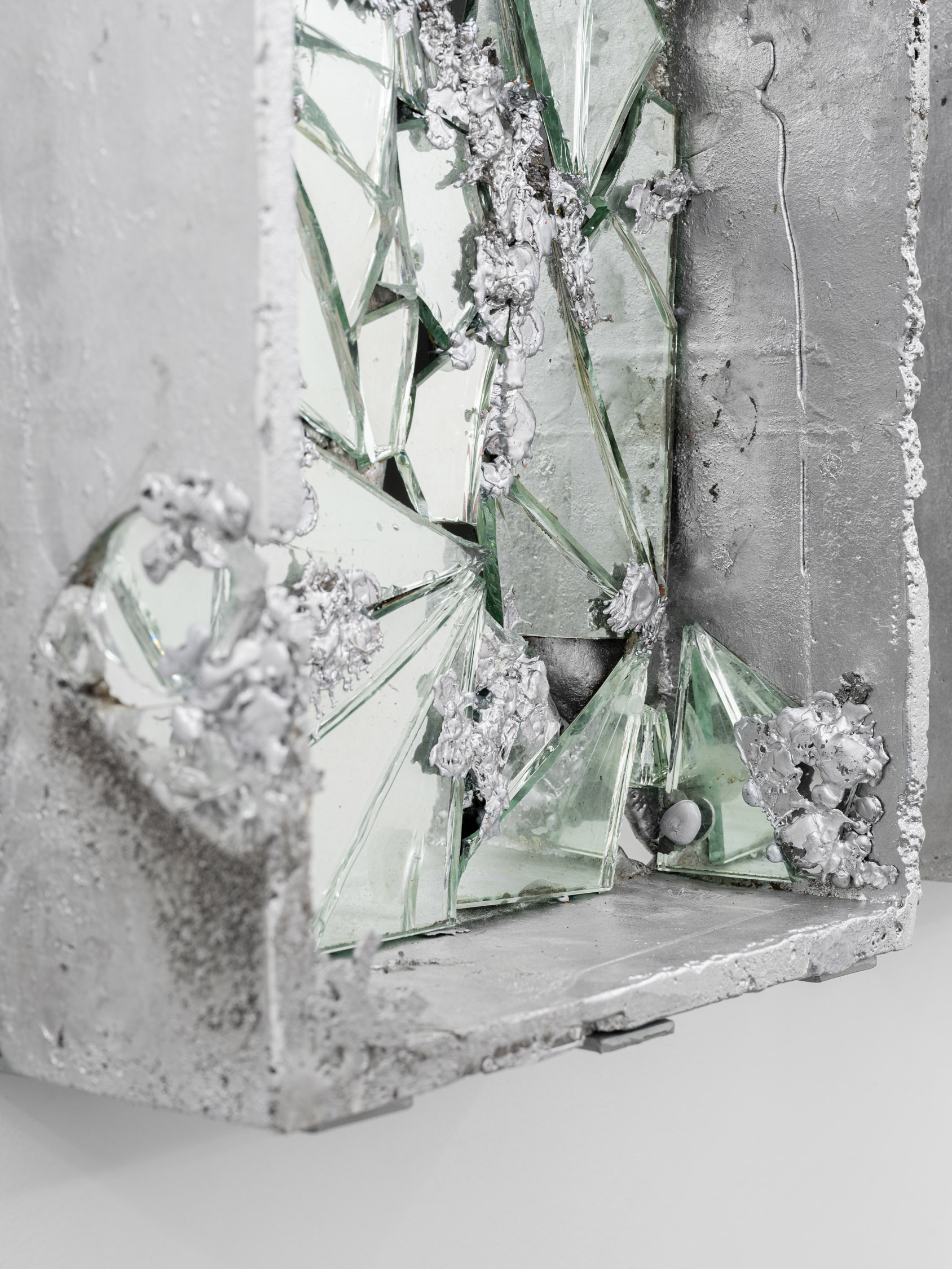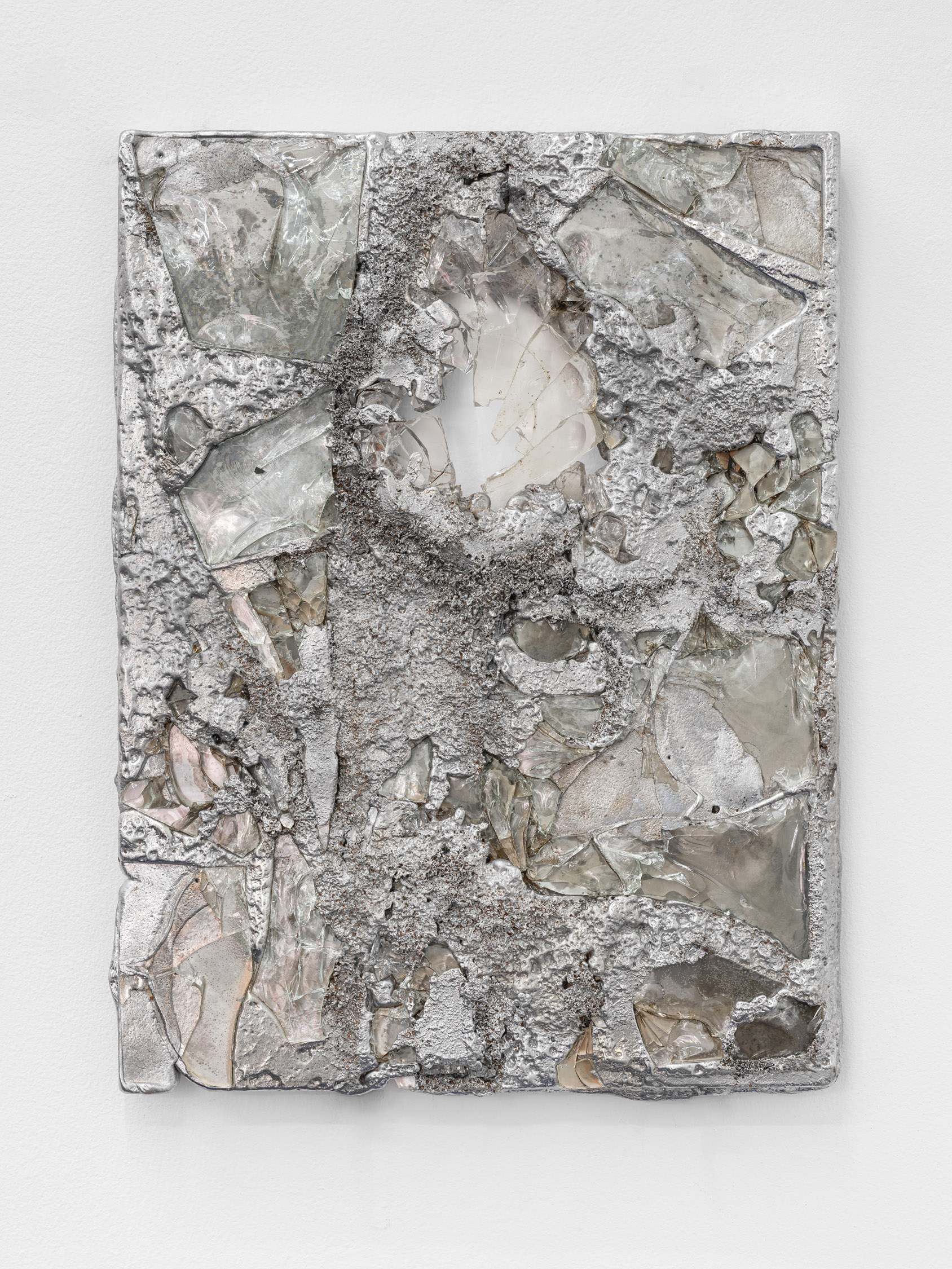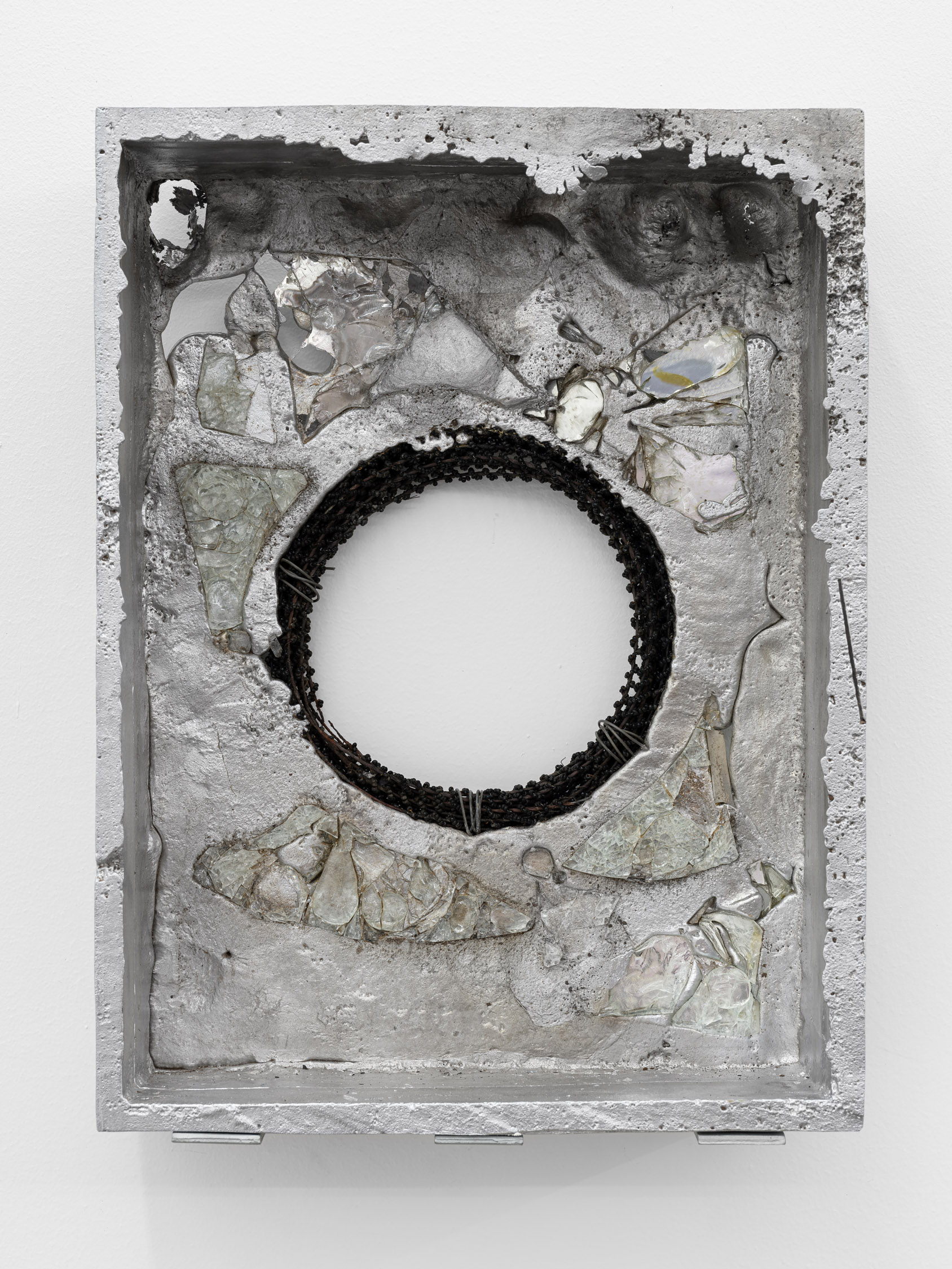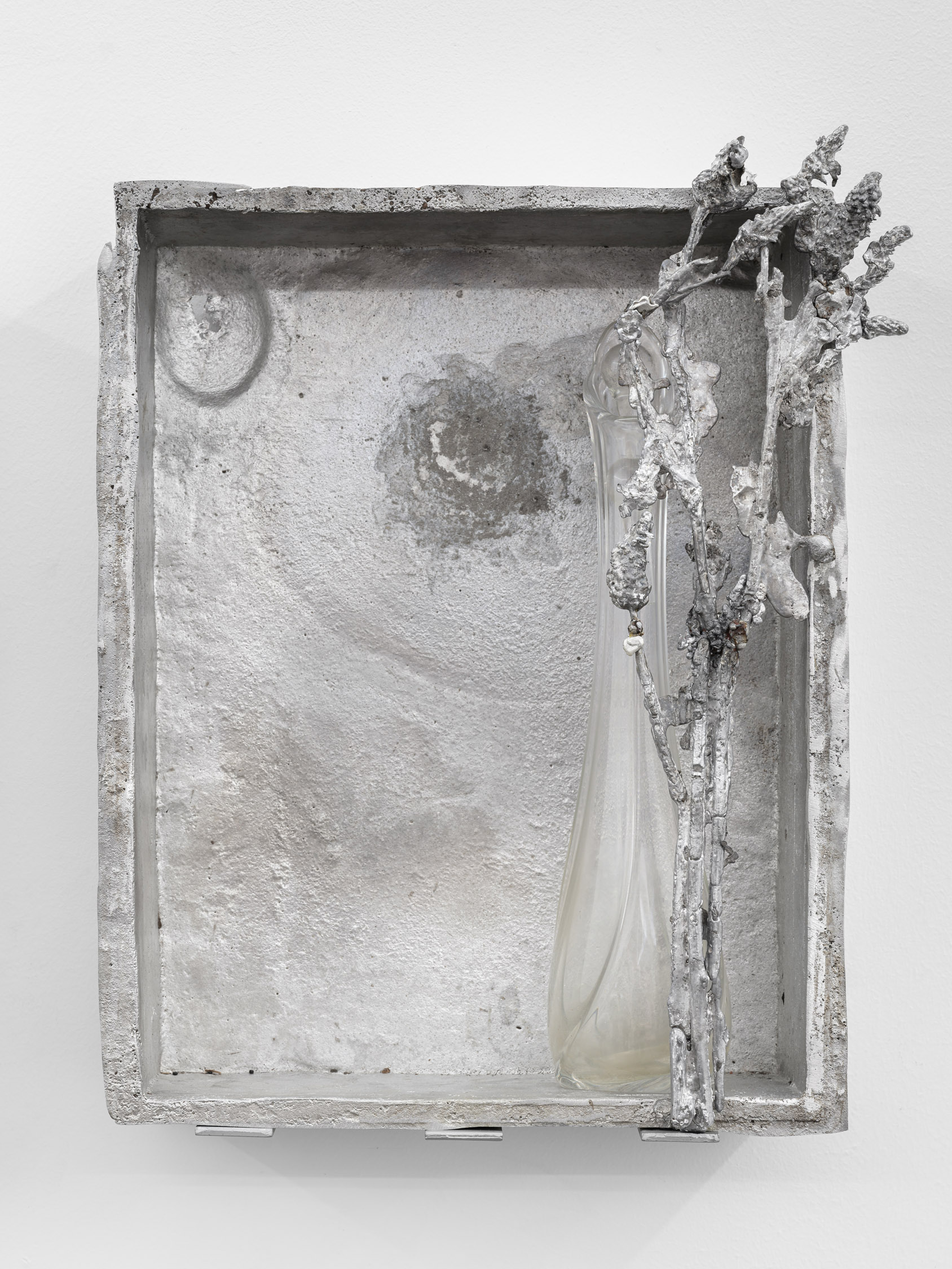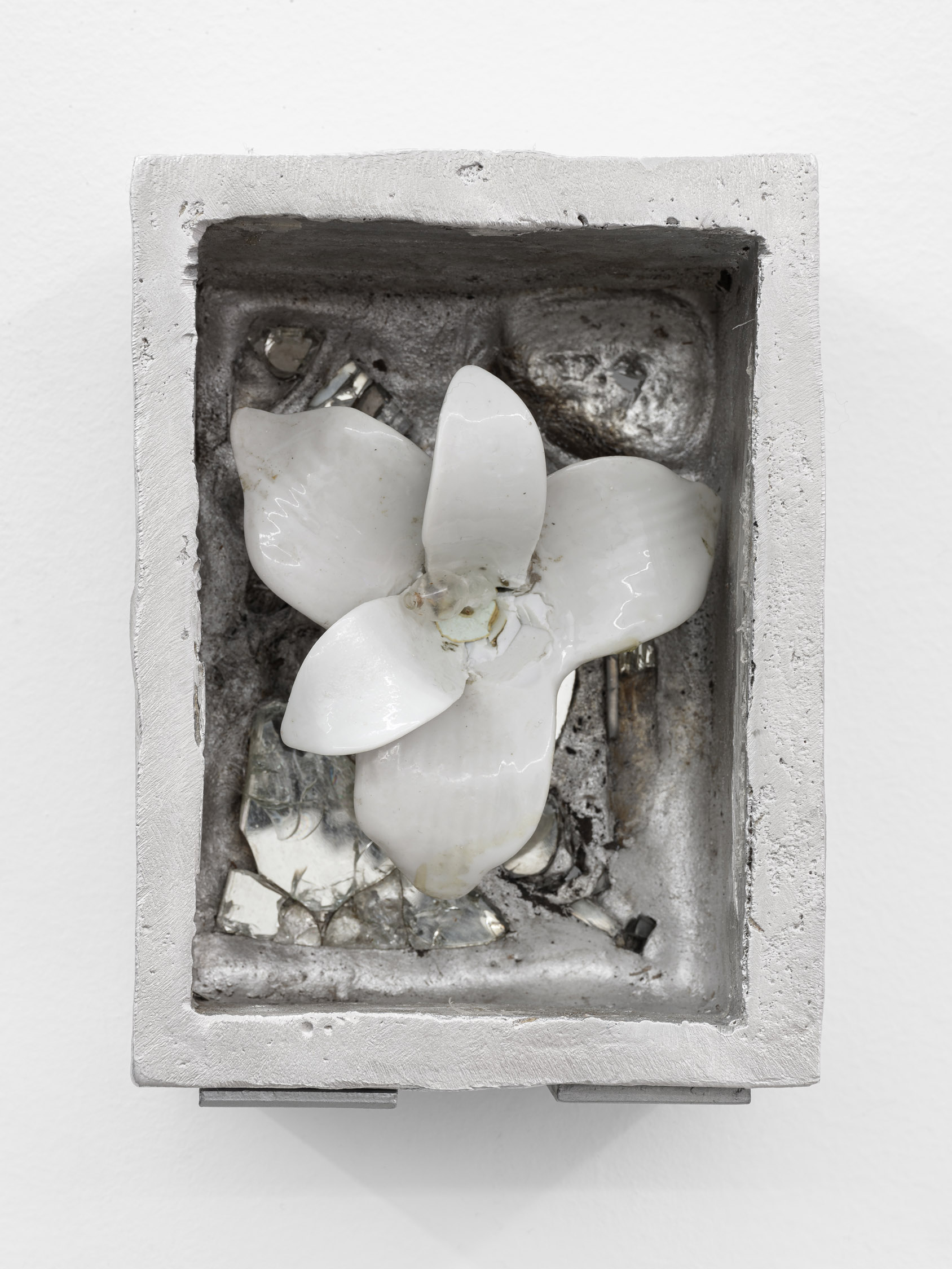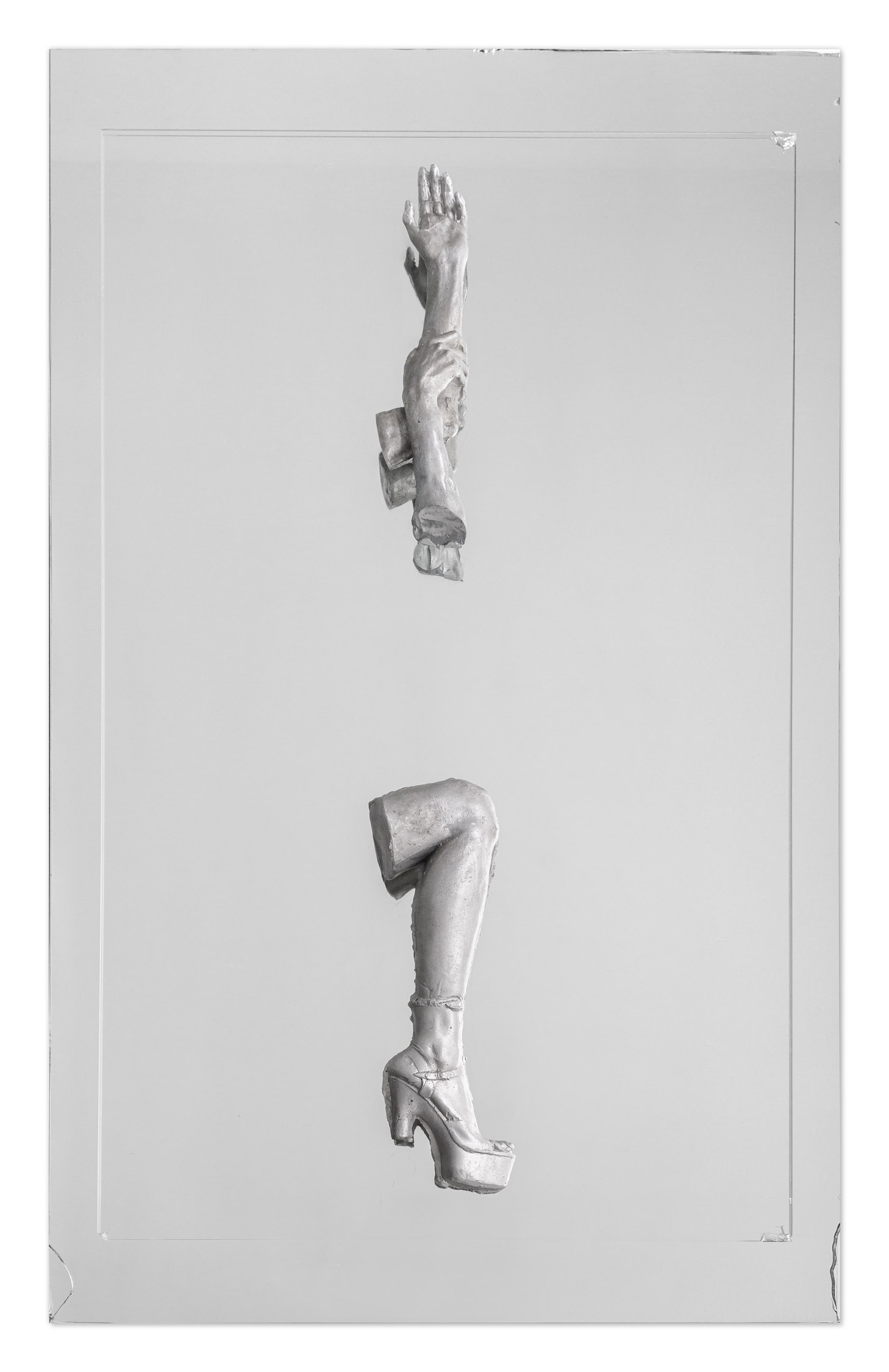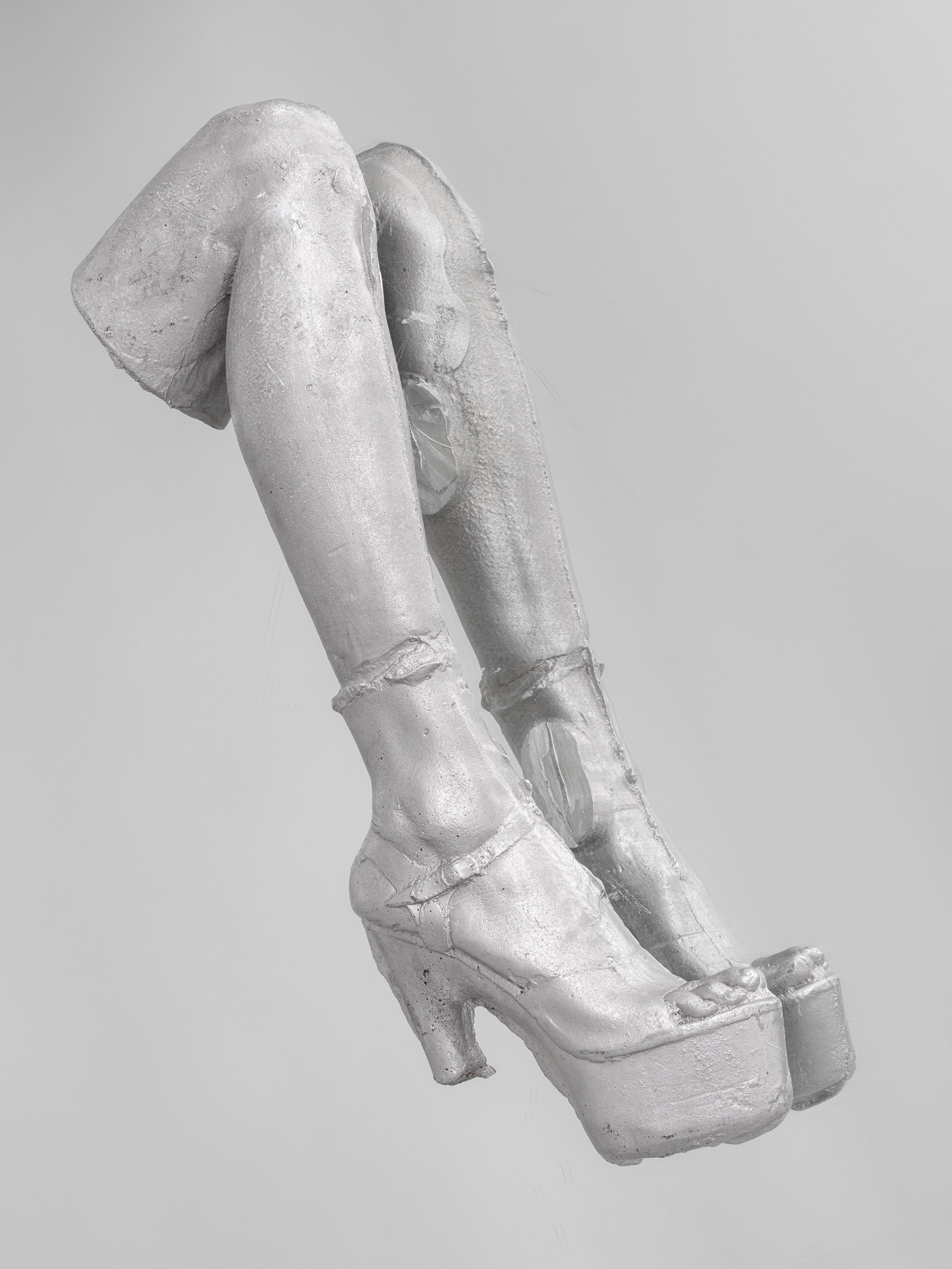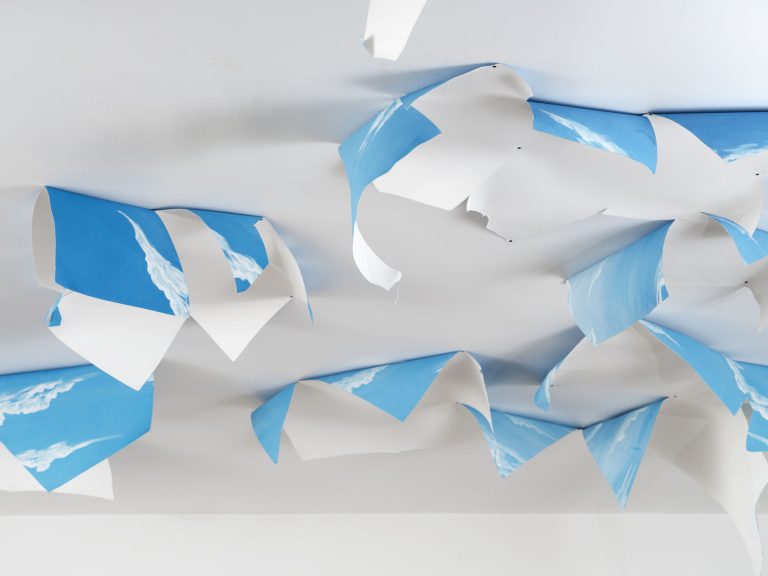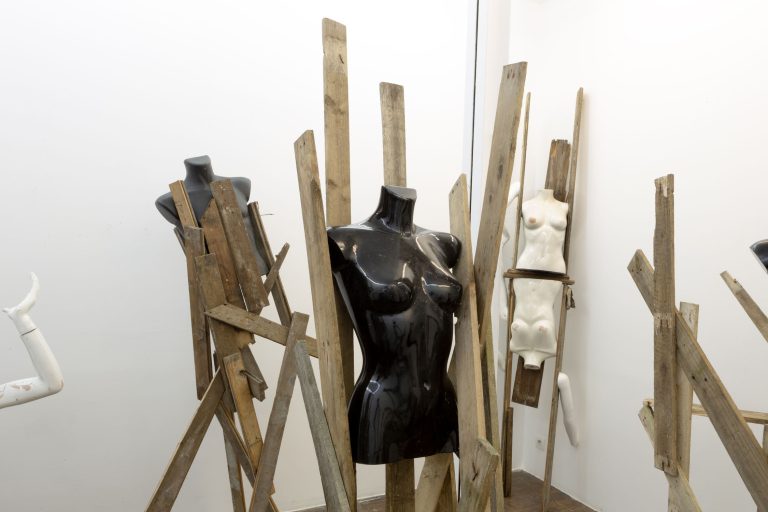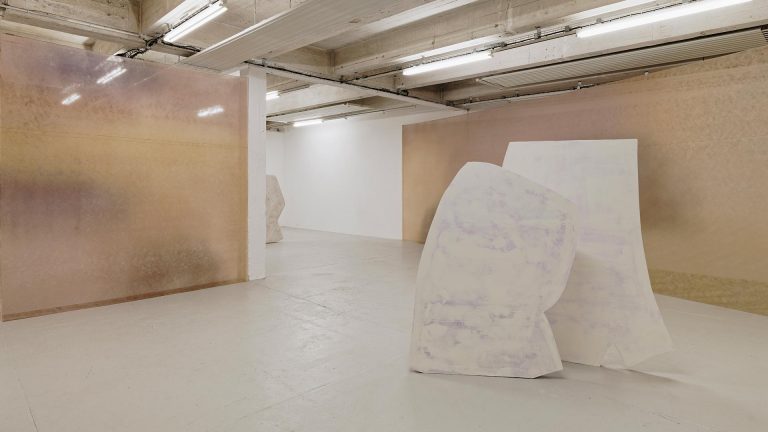Artist: Emma Passera
Exhibition title: Ten Days Of Perfect Ends
Venue: Galerie Derouillon, Paris, France
Date: April 5 – May 4, 2024
Photography: Grégory Copitet / all images copyright and courtesy of the artist and Galerie Derouillon, Paris
Galerie Derouillon is proud to announce the opening of its new project space in its former premises at 38 rue Notre-Dame de Nazareth, in the Haut Marais district.
Open from Thursday to Saturday, from 2 p.m to 7 p.m
For its inaugural exhibition, the gallery is presenting a solo show by Emma Passera, featuring a range of new works. The exhibition will be curated by Thomas Villemin.
Ten days of perfect ends
This space is the guardian of an almost mathematical and monochromatic logic. A rectangular architecture with three white walls and a showcase. The neons’ white lights refract on metallic containers holding glasses, mirrors, and other assorted objects. In the center, a platform raises a mirror displaying the sculptures of a leg in high heels and a hand that clings to an arm. Or perhaps they form a single sculpture? Is the platform utilitarian or part of the work? Does the space extend the sculpture? It is the receptacle of all receptacles, the totality in the assemblage.
For her second solo exhibition in Paris, Emma Passera indulges in simplicity and serenity, while coveting the harmony of various interactions. Notably, one of the most essential encounters remains that of sand and metal. At first glance, the boxes seem to align and articulate within the capital constraint of a standardised process. However, their apparent modesty reveals a considered use of hues, disturbing the bright gray of aluminum, lead, or tin with alternations of nuances between brown and ochre. No pigment is used. The colour variations are witnesses to the passage of time. The duration of contact between the sand and the metal is made as manifest as that of the drips. Observation, patience and gesture are made undeniable. The labor of the foundry is framed, leaving a texture marked by the roughness of determined moments. They thus come together on the walls, much like the rhythm of a poem — an outcome of an incandescent alloy.
Some boxes are filled, while others exude the strength of silence. One box, brimming with broken mirrors, is patched up with a piece of glass similar to a monocle – a “Shadow work”. Another box, with its breaches and minimal arrangement, reconnects us to the tangible materiality of the space, offering brief moments of respite in an otherwise hieratic setting. Which is the most prominent? To what extent must the artist prove her generosity? Passera controls the narrative segments. The continuity of their constructions should remain within the domain of the viewer, moving from grey and porous surfaces, provided with objects, to fragmented reflections. The reception is similar to the varied interpretations of the many figures and objects assembled in Manet’s “The Luncheon in the Studio” (1868). They inevitably bump against the dull tones of the studio wall. Some aspects should be whispered, others left unspoken. The artist sands and polishes to reduce the substance. Is it cathartic or effective? Generosity is practiced with discretion.
The juxtaposition works as the intruder. Although the elements seem to repel each other, their orphaned substances mutually attract them. Artefacts charged with vivid memories of a past life merge with the capitalist medium, forming an autonomous alchemist’s chamber. Just like the technical factors that shaped them, they engage in a dialogue on fabrication, division, redemption, and reconstruction.
Passera has grasped the discipline of the assemblers. She undertook the organisation of chaos. Her compositions combine attraction and repulsion, softness and roughness, natural and industrial elements. The constellations she creates are intriguingly poetic, as each part can individually undergo transformation. The auras of physical materials are merged and transformed into a new combination that, at the same time, transcends and embraces its constituents. In her “Star Circle” (1953-59), Sari Dienes moulded plaster — a crumbly and porous solid — into a replica of the tar from her street. Conversely, in “No emptiness” (2024), Passera transformed metal — a durable and flexible solid — into delicate but highly fragile flowers. The metamorphoses do not always conclude. Only the in-between mechanisms remain.
The ensemble appears crystalline, yet the titles project shadows of vague revelations. Are they snippets from the artist’s personal experiences? Are they autobiographical or autofictional? If they stem from personal experiences, they now belong to the collective. They inhabit the juxtaposition. The loop is complete, leaving us with a complex sense of tranquility. Near the entrance, a mourning flower made of ceramic nestles in a small receptacle. A metallic impression of a once-living flower now hides an empty vase. On the left, an egg-turned-statue is encircled by a lavish bracelet. This pairing hides behind a shattered barrier, formed by the intertwined glass and metal. It seems to risk collapse just to uphold the decency of this union. A last gesture. Tucked away in a corner, lies a box containing a 1930s pearl bracelet. It forms an irregular circle. It leads to the wall. A gateway to a perfect end.
-Thomas Villemin
